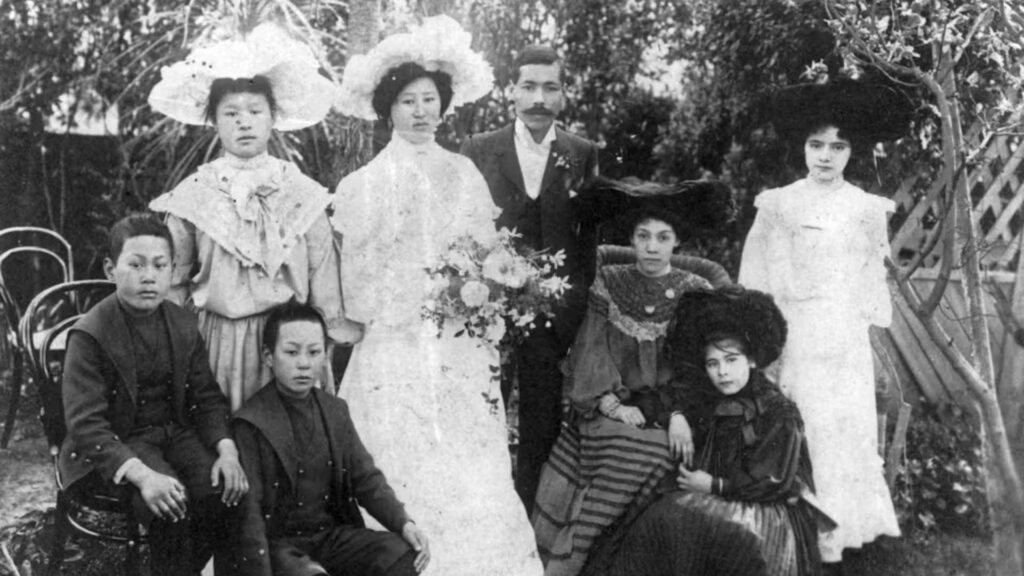Navigating Dual Realities: The Challenges of Migration and Discrimination
The early 20th century marked a pivotal period for Chinese diaspora women. While Chinese men constituted a significant presence in Australia by 1901, numbering almost 30,000, their female counterparts were sparse, numbering fewer than 500. This stark gender disparity, exacerbated by anti-Chinese immigration laws, painted a bleak picture for those women who did venture to Australia. Yet, behind these statistics lies a tapestry of remarkable stories that challenge our understanding of migration and belonging.

Take, for example, the story of Ham Hop, who arrived in Geelong in 1910 as the wife of a local businessman. Despite efforts by her husband and widespread public support, Ham Hop and her Australian-born daughters were ultimately forced to leave in 1913 due to governmental restrictions. Her poignant words, “It is your Government I don’t like. The people would let us stay. The people are very nice. But your Government makes us go,” encapsulate the bureaucratic barriers that dictated the lives of Chinese diaspora women during this era.


Familial Bonds and Cultural Barriers: Negotiating Identity in a New Land
Such accounts highlight the dual forces that shaped the lives of these women: the warmth of community acceptance juxtaposed with the chilling effects of legislative racism. The Immigration Restriction Act and subsequent iterations of the White Australia Policy not only restricted Chinese immigration but also aimed to preserve a racially homogenous society. Prime Minister Alfred Deakin’s assertion that allowing Chinese women and children would “undo all the good we have accomplished” underscores the systematic exclusion embedded in national policies.
Beyond legislative barriers, cultural norms and familial ties further shaped the experiences of Chinese diaspora women. Most hailed from the rural Pearl River Delta region of Guangdong, where familial obligations were central to women’s roles. Migration, when it did occur, was often within the context of marriage or as dependent family members. This familial dynamic provided both a support system and a limitation, reinforcing gender roles that were deeply embedded in both Chinese and Australian societies of the time.
Yet, amidst these challenges, Chinese diaspora women forged paths that defied societal expectations. Gwen Fong, for instance, navigated activism, academia, and medicine, graduating from Melbourne University in 1947—a feat that not only challenged gender norms but also contributed to the broader fabric of Australian society. Similarly, Mary Chong, born in Dubbo in 1908, became the first Chinese woman to graduate from an Australian university and later played pivotal roles in both Australian and Chinese media and government.
Beyond the Margins: Recovering Lost Histories
These stories of resilience and accomplishment underscore the hidden histories that enrich Australia’s multicultural tapestry. They compel us to reexamine conventional narratives that have historically centred on male experiences and white perspectives. The lives of Chinese diaspora women, though often relegated to the margins of history, offer a nuanced understanding of migration as a dynamic and multifaceted process—one shaped by gender, race, class, and politics.
The task of uncovering these hidden histories is not without its challenges. Fragmentary sources and sparse records necessitate a creative and meticulous approach to historical inquiry. Birth certificates, wedding photographs, and oral histories provide vital glimpses into the lives of these women, allowing us to piece together narratives that challenge historical amnesia and reshape collective memory.
Moreover, the significance of these stories extends beyond the confines of academic inquiry. They invite us to reflect on the broader implications of migration, identity, and belonging in contemporary Australia. In a society increasingly shaped by debates over immigration and multiculturalism, the experiences of Chinese diaspora women offer profound insights into the enduring legacies of exclusion and resilience.
Conclusion: Honouring Legacies, Enriching Narratives
As we continue to uncover and amplify these voices, we acknowledge the debt owed to those who have preserved and shared these histories. Scholars like Kate Bagnall, whose research illuminates the lives of Chinese diaspora women, play a crucial role in bridging past and present, ensuring that these stories are not consigned to obscurity.
In conclusion, the hidden history of Chinese diaspora women serves as a powerful testament to resilience in the face of adversity. Their stories challenge us to confront the complexities of identity, migration, and discrimination, offering a path towards a more inclusive understanding of Australia’s past and present. By acknowledging and amplifying these voices, we honour their legacy and enrich our collective narrative with untold truths that demand to be heard.

JOIN THE BUTTERFLY DYNASTY PATREON PAGE
For those eager to delve deeper into the hidden histories of Chinese diaspora women, consider joining The Butterfly Dynasty’s Patreon page. Gain access to exclusive content from Asian Australian Artists sharing their unique experiences.

